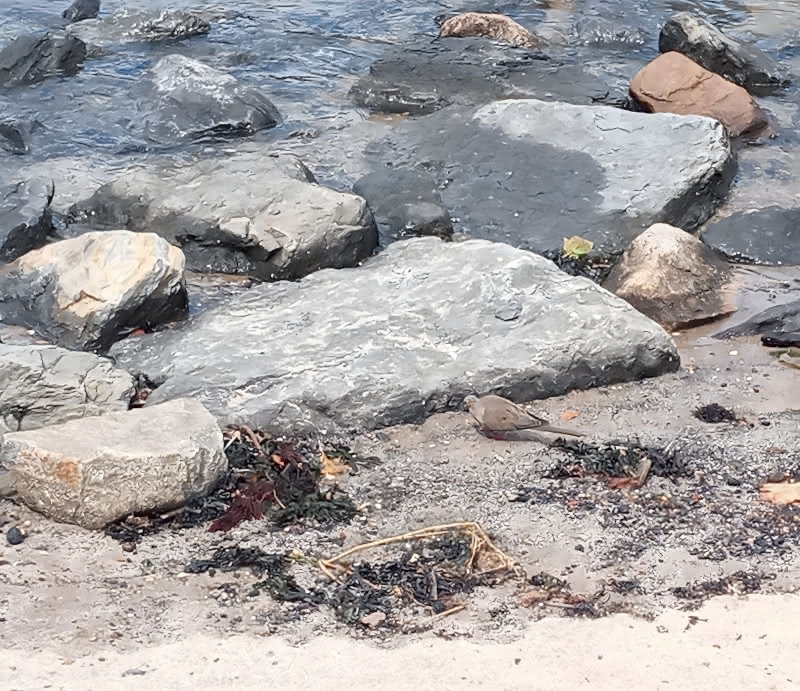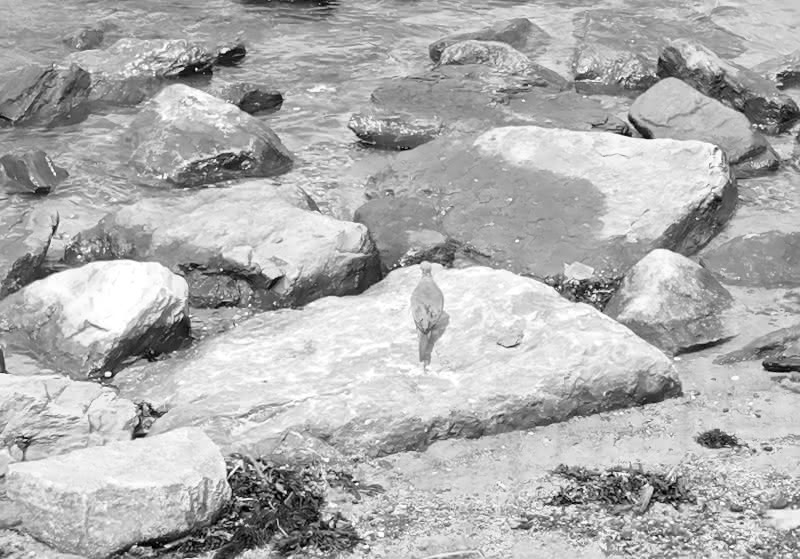We have many pigeon articles in at The New Leaf Journal featuring photos of aesthetic pigeons and even some pigeon history. Mourning doves, which are closely related to the common pigeon, have received less treatment at The New Leaf Journal. Until now, my only dove post was an anecdote of a time when I noted that despite the fact that doves are daintier than their bolder cousins, they nevertheless exhibit similar behavior when confronted by food and a flock of sparrows. Although doves are hardly uncommon in Brooklyn (contrast with black squirrels), they are not as amenable to being photographed by pedestrians as pigeons – both on account of the fact that they are more scarce on sidewalks and more fidgety around people.
Today, I rectify our shortcomings in the area of dove photography content. On a walk through Brooklyn Bridge Park, I captured a serene dove in the natural habitat that is commonly associated with doves.
Behold, a dove on the beach.

I associate doves with trees and gardens, not beaches – and I doubt that I am alone in forming this association. Yet here we have a dove on a “beach” in a park. I put “beach” in quotation marks because this is of course not a real beach, but a little false beach that leads into New York City’s East River. Brooklyn Bridge Park has attracted many new birds to the East River waterfront in Brooklyn. However, as the dove shows, it has also pulled common birds – namely pigeons, sparrows, and doves – close to the water. Every year I see more of all three bird-types in the park. They join birds that one would generally expect to see close in and close to the water, such as the geese that I photographed and featured on two occasions. The sparrows are becoming especially aquatic. (On one and only one occasion, I saw a few crows wandering around on Brooklyn Bridge Park’s Marina, picking fights with ducks.)
I took a few photographs of the dove. It eventually stepped onto a rock and admired the East River.

Here, I thought of the apocryphal story of Alexander the Great weeping about having no more worlds to conquer. Sure enough, after the dove briefly admired the breadth of its East River domain, it thought better of further conquests and returned to its natural habitat on the beach.
(Related: See my post on a photo of rocks at a nearby artificial beach in DUMBO.)